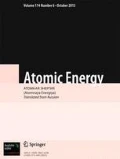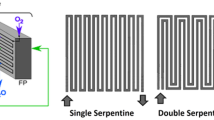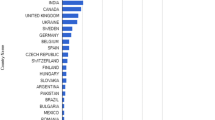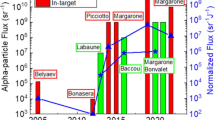Conclusions
The results obtained demonstrate that the operation period extension regime can be optimized by suppressing the poisoning by xenon during power cycling [4].
Each cycle of regulation of the optimized regime [4] contains intervals during which the power is correspondingly decreased with the maximum admissible rate, maintained at the minimum fixed level, increased with maximum admissible rate, increased with the reactor maintained with a zero reactivity excess, and maintained at the maximum fixed level.
The computed operation duration and admissable power production in the optimized operation period extension regime correspond to the currently adopted regimens [1].
It can be expected that the solution of the optimization problem obtained in the point approximation will remain of the same form on switching to spatially dependent variables, since the spatial nonuniformity can be limited, without introducing additional parameters into the problem, by increasing the lower power limit X4min. Analysis of the characteristics of the regime which are associated with the spatial dependence of the coordinates Xi is best done for a specific reactor in a computational model that takes account of the structural features of the reactor. Taking account of the advantages mentioned above, the optimized regime for extension of an operation period is promising for nuclear power plants with BBER reactors.
Similar content being viewed by others
References
F. Ya. Ovchinnikov and V. V. Semenov,Operating Regimes of Water-Moderated Water-Cooled Reactors [in Russian], Énergoatomizdat, Moscow, 3rd edition (1988).
S. A. Andrushechko, E. N. Videneev, V. F. Gorokhov et al., “BBER-440 operation in an operation period extension regime with creeping pressure in the second loop,” Atom. Énerg.,66, No. 1, 3–6 (1989).
H. Conrads and I. Endrizzi, “Streckbetrieb bei Kernkraftwerken mit Druck Wasserreactor,” Atomkernenergie KErntechnik,48, No. 1, 7–10 (1986).
M. Watts and R. Barry, “Xenon suppression in a nuclear fuel of electric power generation system,” Patene 4 582 669 (US), April 15, 1986.
L. S. Pontryagin, V. G. Boltyanskii, R. M. Gamkrelidze, and E. F. Mishchenko, Mathematical Theory of Optimal Processes [in Russian], Fizmatgiz, Moscow (1965).
A. P. Rudik,Optimization of the Physical Characteristics of Nuclear Reactors [in Russian]. Atomizdat, Moscow (1979).
A. L. Lapshin, I. V. Kukhtevich, M. F. Rogov, et al., “Design of a new-generation nuclear power plant with a BBER-640 reactor,” Teploénergetika, No. 12, 2–6 (1995).
N. A. Vinogorov, “Method for regulating a water-moderated water-cooled nuclear reactor in an operation period extension regime,” Patent No. 2095864 (Russian Federation: Byul. Izobriteniya, No. 31 (II parts) (1997).
Additional information
NITI im A. P. Aleksandrova. Translated from Atomnaya Énergiya, Vol. 84, No. 3, pp. 210–216, March, 1998
Rights and permissions
About this article
Cite this article
Vinogorov, N.A. Optimal regulation of a reactor in a regime of an extension of an operation period due to suppression of xenon poisoning. At Energy 84, 155–159 (1998). https://doi.org/10.1007/BF02412696
Received:
Issue Date:
DOI: https://doi.org/10.1007/BF02412696




